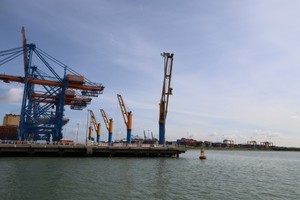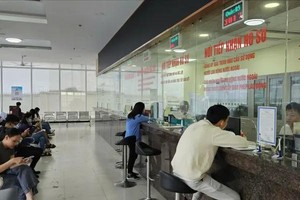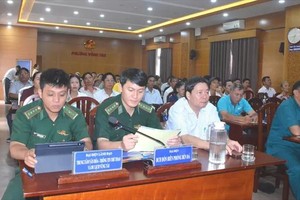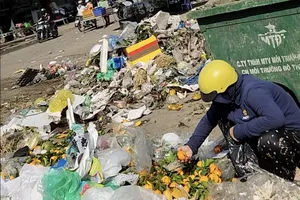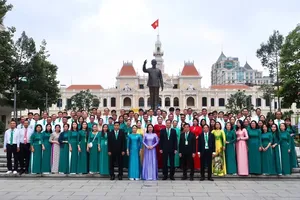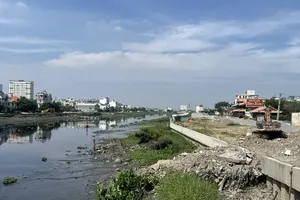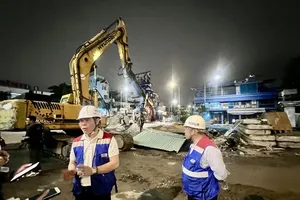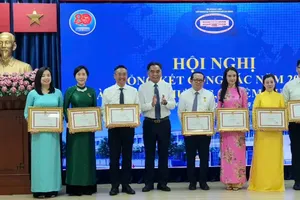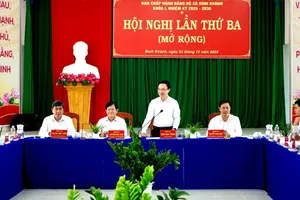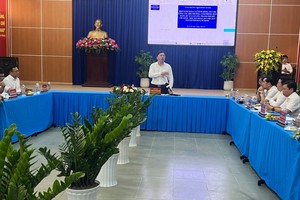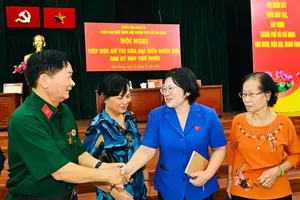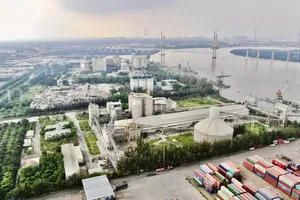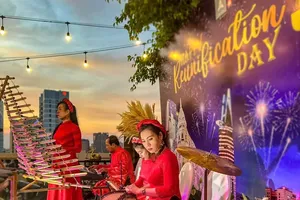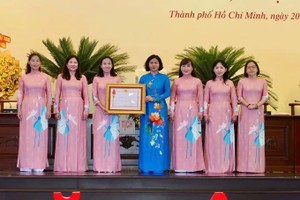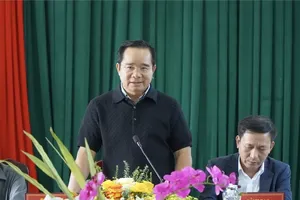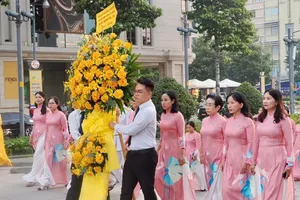 |
Chairman Phan Van Mai of the HCMC People’s Committee is delivering his speech in the meeting (Photo: SGGP) |
HCMC is located in the heart of Southern Vietnam and at the intersection of main routes from North to South, from West to East. It has become one of the transit hubs in Southeast Asia. The populations of many districts in HCMC are equal to those in some provinces.
At present, the downtown of HCMC is the historical core urban area of Saigon – Cho Lon and its neighborhood. There is not yet such a model as multi-centric city, where several main and minor centers are formed along with compact urban areas for better development.
Statistics from the Organization for Economic Cooperation and Development (OECD) reveal that HCMC is leading the country in export turnovers, buts its growth rate is lower than other provinces like Bac Ninh or Binh Duong. The city’s industry sector does not play the leading role; instead, it has become the job of the service sector.
The development rate of new potential industries in HCMC cannot compensate for the reduction of traditional ones in the national economic structure, resulting in a weaker economic leading role in the country. The private business sector accounts for a large proportion, yet they are mostly small and super small enterprises, and there is a lack of large-scale ones which can establish and coordinate the whole ecosystem.
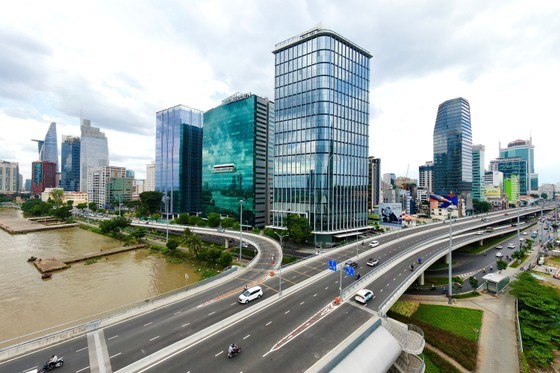 |
The downtown of HCMC on the bank of Saigon River (Photo: SGGP) |
Chairman Tran Ngoc Chinh of the Vietnam Urban Planning – Development Association pointed out that HCMC has Saigon River, which is tens of kilometers long and a true present from the nature. He proposed more investments for both sides of this valuable river.
Agreeing with that, Dr. Tran Du Lich – Chairman of the HCMC Advisory Council for the Implementation of Resolution 98 – stressed that it is essential to prioritize traffic development along Saigon River from District 1 to Cu Chi District to create more breakthroughs for the city. He also mentioned the need to pour money into education and healthcare.
In his summary speech, Chairman Phan Van Mai said that in the adjustment for HCMC’s Master Planning until 2040 with a Vision to 2060, it is critical to consider the multi-centric city model. This Planning must direct the growth towards the Transit-oriented Development (TOD) model, with compact urban areas at each traffic hub.
He also mentioned the need to maintain a certain proportion of agricultural land and to identify a suitable population scale for the city. HCMC is going to pinpoint and keep its positive points while trying to eliminate its negatives. This planning adjustment of the city is both a chance and a responsibility to create a strong foundation for further development in order to help HCMC become a better place to live.
The task of adjusting HCMC’s Master Planning until 2040 with a Vision to 2060 was approved by the Prime Minister in Decision No.1528/QD-TTg. The adjustment must be in accordance with the development direction of the whole city so that HCMC can transform into a hub for international and regional trade and finance, culture and knowledge, scientific research and technology transfer, hi-tech industry, tourism, and logistics.
